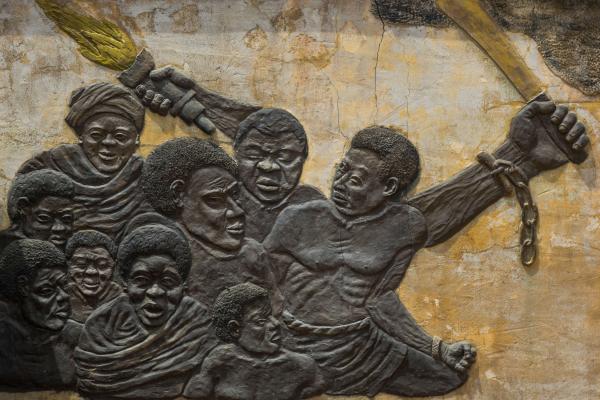The conversations about how we handle war monuments has been wonderfully diverse, interesting, and informative. It’s also raised a different type of question: Why do we have so many monuments to war in the first place?
Where are the monuments to the peacemakers and the community builders who have shown us the way and pulled us together? Why do we have so many statues of generals in such prominent places, and so few remembering the many healers, teachers, and leaders among us? Why are we so enamored of war?
I drove through a small town in southern Ohio this spring and was struck by their downtown square. The town is a quaint place, old storefronts dot the square and in the middle is a cannon — a war monument and a plaque with the names of residents who have died in wars.
And that's all.
I was left wondering: Why isn’t there a statue of the person who founded the town? Or something dedicated to the person who started the first school so children could learn about their world?
Perhaps the town could erect a statue of the town’s first doctor, the one who made house calls for sick children in the middle of the night and who delivered many of the early settlers into the world. Or maybe a reminder of a wise and compassionate leader who got the town through a time of division and showed everyone that there are ways to settle differences other than conflict.
It would be nice to see more tributes to those who remind us that we can get along if we really try. Instead, we seem to be far more interested in monuments to those who have waged and have been killed in war.
Why is that?
This isn’t confined to small towns, of course. Great cities have even bigger and more expensive monuments to wars. Streets are named for leaders of war. Those who fought in wars are honored in various ways.
What about the peacemakers who work to save lives by preventing wars?
There’s a statue of Mr. Rogers along the river in downtown Pittsburgh, right across from where Fort Pitt stood. I’m struck by the proximity — one place recalls war, the other remembers a spokesman for peace and love.
“Peace means far more than the opposite of war,” Fred Rogers once said.
And he’s right. Peace is a willingness to do the hard work to change attitudes and show people that we can get along.
A starting point is recognizing the truth that war is never noble or courageous. Noble and courageous acts occur during war, but war itself is always the ultimate human failure and must never be portrayed as anything else. War is the expression of our worst impulses — killing and maiming one another while destroying the many good things we've built together.
War monuments ought to reflect that innate truth. We must never glorify war. Monuments must never romanticize it or make it seem like a desirable solution — it never is.
We must never put war on a pedestal and end the cycle of doing this.
As long as we worship war, we’ll never have peace. Peace can never come at the end of a sword or a cannon or a rifle or a rocket launcher. That kind of “peace” is illusory and temporary. And perhaps part of that cyclical change is paying attention to what we honor with our monuments, the ones that define us and direct us.
We should make more of an effort to honor the people who work for peace and build communities. Let’s erect statues to those who bring us inspiration, healing, and wisdom. Let’s recognize those who show us how to wage peace in everyday ways.
Let’s put them on our pedestals instead.
Got something to say about what you're reading? We value your feedback!







